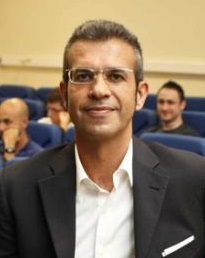A physical-layer view of the Metaverse – The Smart EM Environment (SEME) paradigm
Author: MASSA Andrea – Co-Authors: OLIVERI Giacomo, ROCCA Paolo, SALUCCI Marco
The term Metaverse and its implementation are strongly related to the ubiquitous availability of considerable computational resources and huge information flows from content generators to users. From the physical-layer viewpoint, it means to have available a wired/wireless infrastructure well beyond the standard one based on the use of base-stations (BTSs) and terminals. As a matter of fact, while higherfrequency bands are mandatory for improving the users’ experience and QoS, the densification of BTSs is not a suitable solution because of the direct as well as the indirect costs. Moreover, metaverse-enabling wireless architectures should be “smart” and simple. Through an innovative design, wireless networks need to transform from centralized to distributed being simple and integrated instead heavy-duty andincremental, while moving from terrestrial to ubuquitous access. This is the background picture of the Smart EM Environment (SEME) paradigm for new generation wireless architectures. Moving from a vision of the propagation environment as a “stone guest” in a wireless communication, the SEME approach considers the propagation channel as a key-actor in fitting the technological requirements ofa sustainable and reliable implementation of the metaverse. Accordingly, not-only the obstacles and objects are taken into account and opportunistically exploited to improve the QoS and the user-experience (UE), but also they are “improved” by adding smart entities such as smart devices (e.g., EM skins [EMSs], reconfigurable intelligent surfaces [RISs], smart repeaters, and IAB nodes) and smart objects (e.g.,WAIM and meta-antennas or artificial scatterers). This talk will review recent trends and advances in the build in of the SEME towardsan effective and out-of-the-labs implementation/deployment of the metaverse.
Biography

Andrea Massa (IEEE Fellow, IET Fellow, Electromagnetic Academy Fellow) he has been a Full Professor of Electromagnetic Fields @ University of Trento since 2005.
At present, Prof. Massa is the director of the network of federated laboratories “ELEDIA Research Center” located in Brunei, China, Czech, France, Greece, Italy, Japan, Perù, Tunisia with more than 150 researchers. Moreover, he is holder of a Chang-Jiang Chair Professorship @ UESTC (Chengdu – China), Visiting Research Professor @ University of Illinois at Chicago (Chicago – USA), Visiting Professor @ Tsinghua (Beijing – China), Visiting Professor @ Tel Aviv University (Tel Aviv – Israel), and Professor @ CentraleSupélec (Paris – France). He has been holder of a Senior DIGITEO Chair at L2S-CentraleSupélec and CEA LIST in Saclay (France), UC3M-Santander Chair of Excellence @ Universidad Carlos III de Madrid (Spain), Adjunct Professor at Penn State University (USA), Guest Professor @ UESTC (China), and Visiting Professor at the Missouri University of Science and Technology (USA), the Nagasaki University (Japan), the University of Paris Sud (France), the Kumamoto University (Japan), and the National University of Singapore (Singapore). He has been appointed IEEE AP-S Distinguished Lecturer (2016-2018) and served as Associate Editor of the “IEEE Transaction on Antennas and Propagation” (2011-2014).
His research activities are mainly concerned with inverse problems, antenna analysis/synthesis, radar systems and signal processing, cross-layer optimization and planning of wireless/RF systems, system-by-design and material-by-design (metamaterials and reconfigurable-materials), and theory/applications of optimization techniques to engineering problems (coms, medicine, and biology).
Prof. Massa published more than 900 scientific publications among which more than 350 on international journals (> 14.700 citations – h-index = 63 [Scopus]; > 12.000 citations – h-index = 58 [ISI-WoS]; > 23.900 citations – h-index = 88 [Google Scholar]) and more than 570 in international conferences where he presented more than 210 invited contributions (> 50 invited keynote speaker) (www.eledia.org/publications). He has organized more than 100 scientific sessions in international conferences and has participated to several technological projects in the national and international framework with both national agencies and companies (18 international prj, > 5 M€; 8 national prj, > 5 M€; 10 local prj, > 2 M€; 63 industrial prj, > 10 M€; 6 university prj, > 300 K€).
